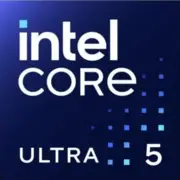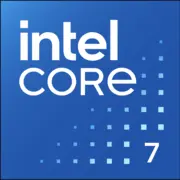Intel Core Ultra 5 135H vs Intel Core 7 150U
CPU Comparison Result
Below are the results of a comparison of
Intel Core Ultra 5 135H
and
Intel Core 7 150U
processors based on key performance characteristics, as well as power consumption and much more.
Advantages
- More Total Cores: 14 (14 vs 10)
- Larger L3 Cache: 18 MB (18 MB vs 12 MB)
- Newer Launch Date: January 2024 (December 2023 vs January 2024)
Basic
Intel
Label Name
Intel
December 2023
Launch Date
January 2024
Laptop
Platform
Mobile
Core Ultra 5 135H
Model Name
?
The Intel processor number is just one of several factors - along with processor brand, system configurations, and system-level benchmarks - to be considered when choosing the right processor for your computing needs.
150U
Meteor Lake
Code Name
Raptor Lake
CPU Specifications
14
Total Cores
?
Cores is a hardware term that describes the number of independent central processing units in a single computing component (die or chip).
10
18
Total Threads
?
Where applicable, Intel® Hyper-Threading Technology is only available on Performance-cores.
12
4
Performance-cores
2
10
Efficient-cores
8
-
Max Turbo Frequency
?
Max Turbo Frequency is the maximum single-core frequency at which the processor is capable of operating using Intel® Turbo Boost Technology and, if present, Intel® Turbo Boost Max Technology 3.0 and Intel® Thermal Velocity Boost. Frequency is typically measured in gigahertz (GHz), or billion cycles per second.
5.4 GHz
3.6 GHz
Performance-core Base Frequency
-
2.3 GHz
Efficient-core Base Frequency
-
4.6 GHz
Performance-core Max Turbo Frequency
?
Maximum P-core turbo frequency derived from Intel® Turbo Boost Technology.
-
112 KB per core
L1 Cache
-
2 MB per core
L2 Cache
-
18 MB
L3 Cache
12 MB
Intel BGA 2049
CPU Socket
?
The socket is the component that provides the mechanical and electrical connections between the processor and motherboard.
FCBGA1744
7 nm
Technology
?
Lithography refers to the semiconductor technology used to manufacture an integrated circuit, and is reported in nanometer (nm), indicative of the size of features built on the semiconductor.
Intel 7
28 W
TDP
15 W
-
Processor Base Power
?
The time-averaged power dissipation that the processor is validated to not exceed during manufacturing while executing an Intel-specified high complexity workload at Base Frequency and at the junction temperature as specified in the Datasheet for the SKU segment and configuration.
15 W
-
Maximum Turbo Power
?
The maximum sustained (>1s) power dissipation of the processor as limited by current and/or temperature controls. Instantaneous power may exceed Maximum Turbo Power for short durations (<=10ms). Note: Maximum Turbo Power is configurable by system vendor and can be system specific.
55 W
-
Max. Operating Temperature
?
Junction Temperature is the maximum temperature allowed at the processor die.
100°C
Memory Specifications
DDR5-5600,LPDDR5x-7467
Memory Type
?
Intel® processors come in four different types: Single Channel, Dual Channel, Triple Channel, and Flex Mode. Maximum supported memory speed may be lower when populating multiple DIMMs per channel on products that support multiple memory channels.
Up to DDR5 5200 MT/s Up to DDR4 3200 MT/s Up to LPDDR5/x 6400 MT/s Up to LPDDR4x 4267 MT/s
96GB
Max Memory Size
?
Max memory size refers to the maximum memory capacity supported by the processor.
96 GB
2
Memory Channels
?
The number of memory channels refers to the bandwidth operation for real world application.
2
GPU Specifications
True
Integrated Graphics Model
?
An integrated GPU refers to the graphics core that is integrated into the CPU processor. Leveraging the processor's powerful computational capabilities and intelligent power efficiency management, it delivers outstanding graphics performance and a smooth application experience at a lower power consumption.
Intel® Graphics
-
Graphics Frequency
?
Graphics max dynamic frequency refers to the maximum opportunistic graphics render clock frequency (in MHz) that can be supported using Intel® HD Graphics with Dynamic Frequency feature.
1.3 GHz
Miscellaneous
-
Intel Deep Learning Boost (Intel DL Boost) on CPU
?
A new set of embedded processor technologies designed to accelerate AI deep learning use cases. It extends Intel AVX-512 with a new Vector Neural Network Instruction (VNNI) that significantly increases deep learning inference performance over previous generations.
Yes
Benchmarks
Geekbench 6 Single Core
Core Ultra 5 135H
2232
+15%
Core 7 150U
1943
Geekbench 6 Multi Core
Core Ultra 5 135H
11089
+60%
Core 7 150U
6919
Geekbench 5 Single Core
Core Ultra 5 135H
1476
Core 7 150U
1769
+20%
Geekbench 5 Multi Core
Core Ultra 5 135H
8582
+9%
Core 7 150U
7896
Passmark CPU Single Core
Core Ultra 5 135H
3501
Core 7 150U
4110
+17%
Passmark CPU Multi Core
Core Ultra 5 135H
23765
+32%
Core 7 150U
18071









